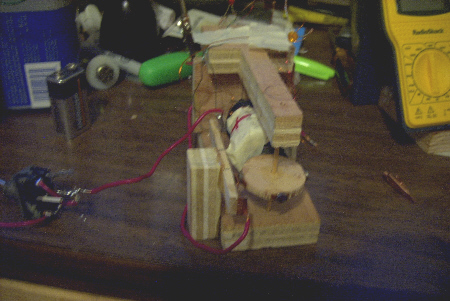

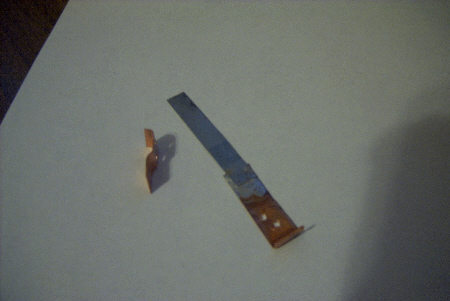
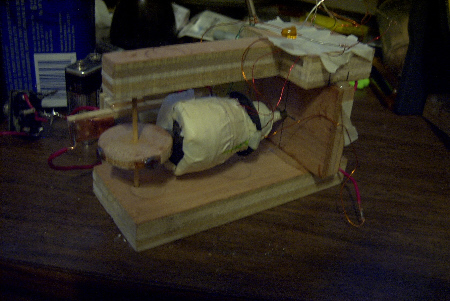
As you can
see in the pic. I added a little extra mag.wire behind the first coil and
maid a extra coil behind the run coil just to see what would happen it was
about 25' 22 ga. . I used 52' 24 ga. wire for both on the main coil and
wound it cone shaped again . I then wound 60' of 30 ga. on top of the
cone. it seems to work like a transformer or a Tesla coil and picks up
power when the magnetic field collapses as the reed switch cycles.
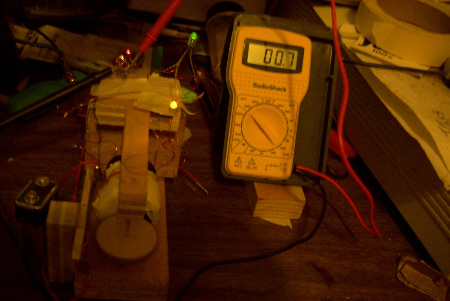
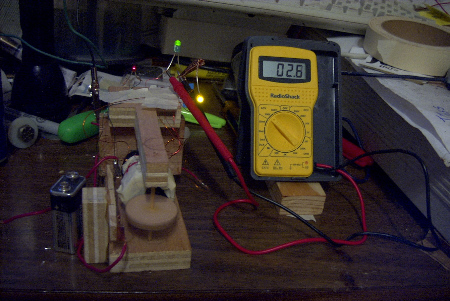
The green
LED is connected to the 60' of 30 ga. wire that is wrapped over the
regular cone wrap. I went completely over the total cone instead of
stepping it back for every layer like winding the cone.
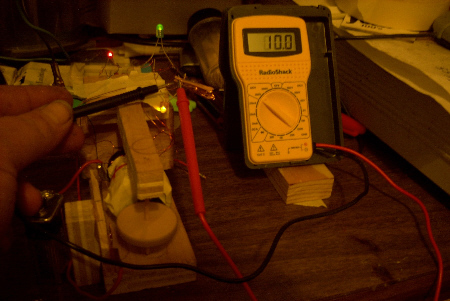
As you see
here I get the best voltage from the regular winding 52' of 24 ga. I used
the same wire for the both sides of the coil on the main winding it is
connected to the yellow LED. I'm running the motor with two 6v lantern
batteries in sires to get 12v dc @ 6amp. as you see for your self I get
13.3 vac while I only use 12v dc. OU ? NO when I switch over from
the battery to the output power the motor stops. While the voltage is
there I don't have the amp's would be my guess.
As you see
I set the reed switch over at the side this time it worked like the last
motor It changed speed as I move the reed switch so I waited to glue it
till I found the right spot when I got the best speed then I glued it down
but I guess a person could make it so you could move it if you needed to
change speed. Well I had a lot of fun making it and it would make a good
science fair project for some kid if they should like to go for it.